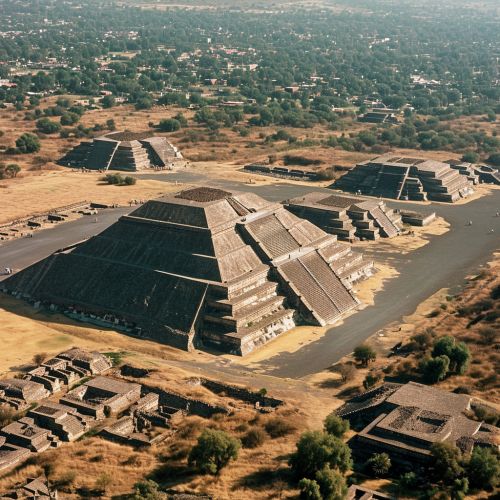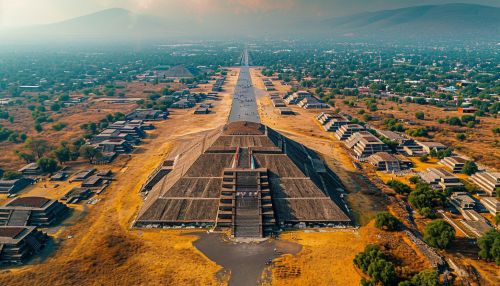Teotihuacan
Overview
Teotihuacan, also known as "the place where the gods were created", is an ancient Mesoamerican city located in the Basin of Mexico. Covering a total area of 83 square kilometers, it is one of the largest and most important archaeological sites in the world, known for its complex urban plan, monumental architecture, and distinctive art style.


History
Teotihuacan's origins are still a subject of research among archaeologists. The city was established around 400 BCE, and it reached its zenith between 100 BCE and 650 CE. During this period, it was the largest city in the pre-Columbian Americas, with a population estimated at 125,000 or more, making it at least the sixth-largest city in the world during its epoch.
Architecture
Teotihuacan's urban layout reveals an extraordinary level of social and political organization. The city's broad central avenue, known as the Avenue of the Dead, links the major architectural complexes, including the Pyramid of the Sun and the Pyramid of the Moon. Other significant structures include the Temple of the Feathered Serpent, the Palace of Quetzalpapalotl, and the Palace of the Jaguars.
Art and Culture
The art of Teotihuacan is known for its symbolic and complex iconography, which reflects the cosmological and religious beliefs of its society. The city's murals, pottery, and sculptures provide valuable insights into its cultural practices, social structure, and economic activities.
Decline and Legacy
The decline of Teotihuacan is believed to have occurred around the 7th or 8th century. The reasons for this decline are still debated among scholars, with theories ranging from internal strife and social unrest to environmental changes. Despite its fall, Teotihuacan's cultural influence persisted in Mesoamerica, and its ruins have continued to inspire awe and admiration.
